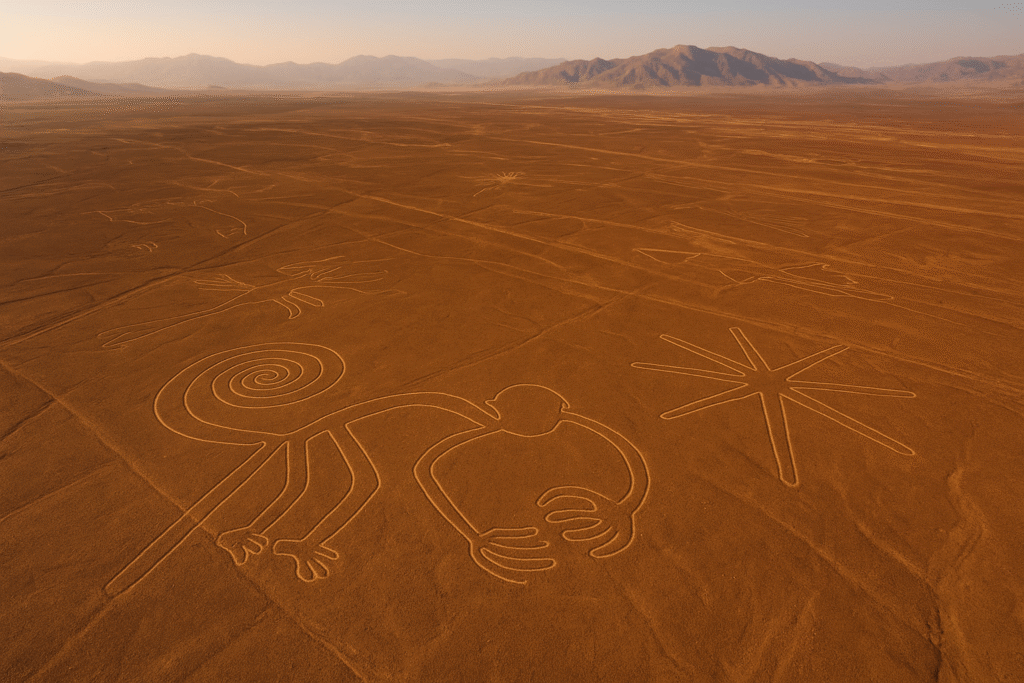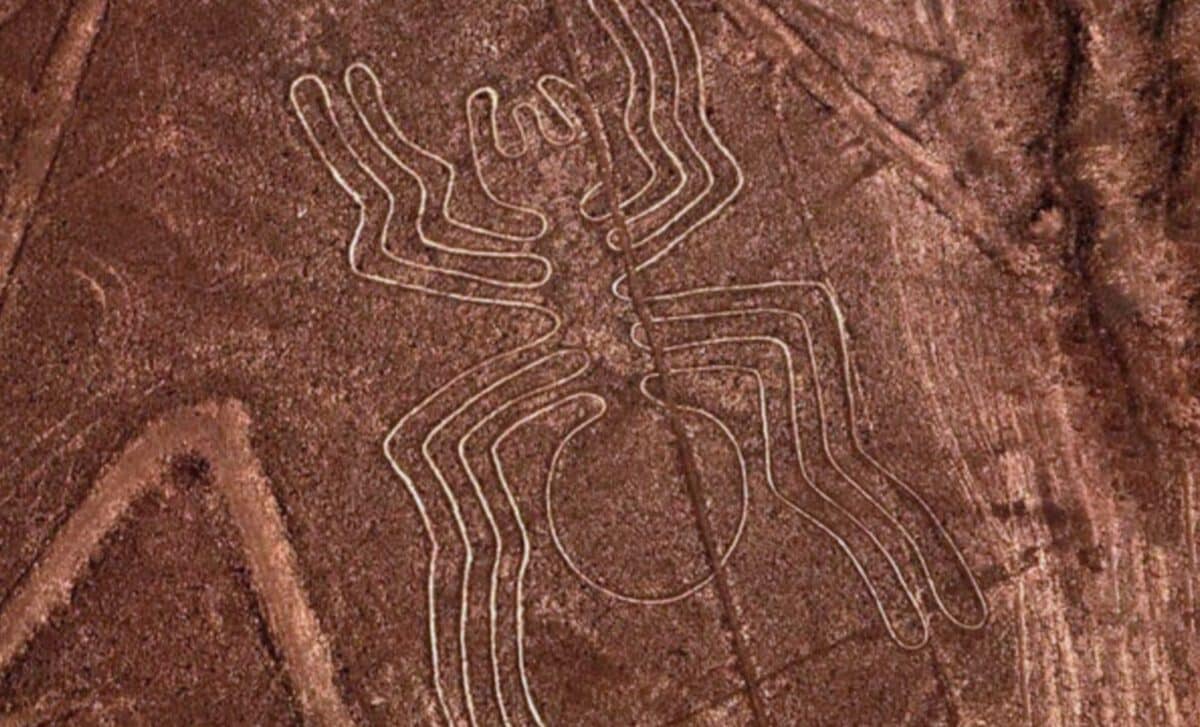In a groundbreaking leap for historical research, artificial intelligence in archaeology has helped solve one of the most enduring puzzles of the ancient world: the Nazca Lines. In just six months, researchers from Yamagata University’s Institute of Nazca and IBM identified 303 previously undiscovered geoglyphs in Peru’s coastal desert doubling the known number and rewriting the history books in record time.
This remarkable feat, published in the Proceedings of the National Academy of Sciences (PNAS), is not just an academic milestone it’s a shining example of how technology and human expertise can merge to reveal the secrets of civilizations lost to time.
UpThe Nazca Lines: An Ancient Puzzle Reimagined
The Nazca Lines, created between 200 BC and 650 AD, are colossal artworks etched into the arid Peruvian desert. These designs depicting animals, plants, humans, and abstract patterns are so massive that many can only be appreciated from the air. For decades, archaeologists have debated their purpose: were they astronomical calendars, religious symbols, or messages to the gods?
Until recently, the sheer size of the desert and the faint erosion of the lines made discovery painstakingly slow. Traditional surveys relied on aerial photography and manual mapping, which could take years to cover even a fraction of the territory. But this changed dramatically with the arrival of artificial intelligence in archaeology.
How AI Transformed the Search
Instead of years of fieldwork, AI condensed the process into months. Researchers fed thousands of high resolution aerial and satellite images into IBM’s AI system, training it to detect subtle patterns invisible to the naked eye. The AI analyzed terabytes of data, flagging suspicious formations for on the.ground verification.
Professor Masato Sakai, lead archaeologist, explained, The ability to conduct the survey in such a short period was thanks to the use of AI. It identified lines we might have missed for decades. This blend of algorithmic precision and human validation ensured that each new geoglyph was not only detected but also placed in its cultural and historical context.
Archaeologists worldwide are calling this a paradigm shift in heritage research. Dr. Susan Giles, an anthropologist at Cambridge University, believes that artificial intelligence in archaeology will become as essential as carbon dating in the coming decades.
We’ve reached a point where AI doesn’t just speed up our work it expands what’s possible. It can uncover details that human eyes may never catch.
This technology doesn’t replace fieldwork it enhances it. While AI scans vast landscapes in hours, human archaeologists bring the critical interpretation and cultural understanding that no algorithm can replicate.

From Satellite Image to Desert Sand
One particularly striking find was a geoglyph of a large feline, over 50 meters long, barely visible under centuries of erosion. The AI detected the shape by recognizing the curvature and contrast patterns across multiple overlapping images.
When the excavation team arrived, the faint lines were almost invisible from the ground. Using the AI’s coordinates, they carefully traced and cleaned the shallow depressions, revealing a complete figure that hadn’t been seen for over 1,500 years.
This case alone demonstrates the synergy between cutting edge technology and traditional archaeological methods AI pointed the way, but it took skilled human hands to bring the ancient cat back into the light.
The Human Side of Discovery
For the field teams in Peru, the experience was more than scientific it was deeply emotional. Archaeologist Maria Delgado described the moment she saw the full geoglyph emerge. It felt like shaking hands with someone from the past. You realize these lines were drawn by real people, with hopes, beliefs, and a vision of the world that still speaks to us.
This emotional connection is why many in the field stress that artificial intelligence in archaeology should be viewed as a partner, not a replacement. The human sense of wonder, cultural respect, and ethical stewardship is irreplaceable.
Implications for Future Research
The success in Peru could change how archaeologists approach large-scale sites worldwide. AI could help locate ancient irrigation systems under the sands of Egypt, hidden burial grounds in dense Amazonian forests, or long lost trade routes buried beneath cities.
However, there are challenges. Large AI datasets require significant funding, high quality imagery, and computing power resources that are not equally available in all regions. There’s also the ethical dimension: how to protect newly discovered sites from looting or unregulated tourism once AI reveals their locations.
Still, the potential is enormous. If paired with open access data sharing, AI discoveries could empower local archaeologists and communities to preserve their heritage more effectively.
AI allowed researchers to work at unprecedented speed without compromising accuracy. The most successful discoveries came from AI flagging patterns and humans providing cultural interpretation. Local teams ensured that each find respected the heritage and traditions of the area.
The Future of AI in Archaeology
As this case shows, artificial intelligence in archaeology is not a distant dream it’s already reshaping our understanding of the past. What was once a decades long process is now achievable in a matter of months, opening doors to new discoveries and reinterpretations of human history.
For the Nazca Lines, this means hundreds of new symbols are now part of our shared heritage, each one a silent message from an ancient civilization to the modern world. And for archaeology as a whole, it signals the dawn of a new era where history can be read faster, deeper, and with unprecedented clarity.
The desert has always held its secrets close but with the right blend of technology and human insight, even the most ancient mysteries are ready to be told.

